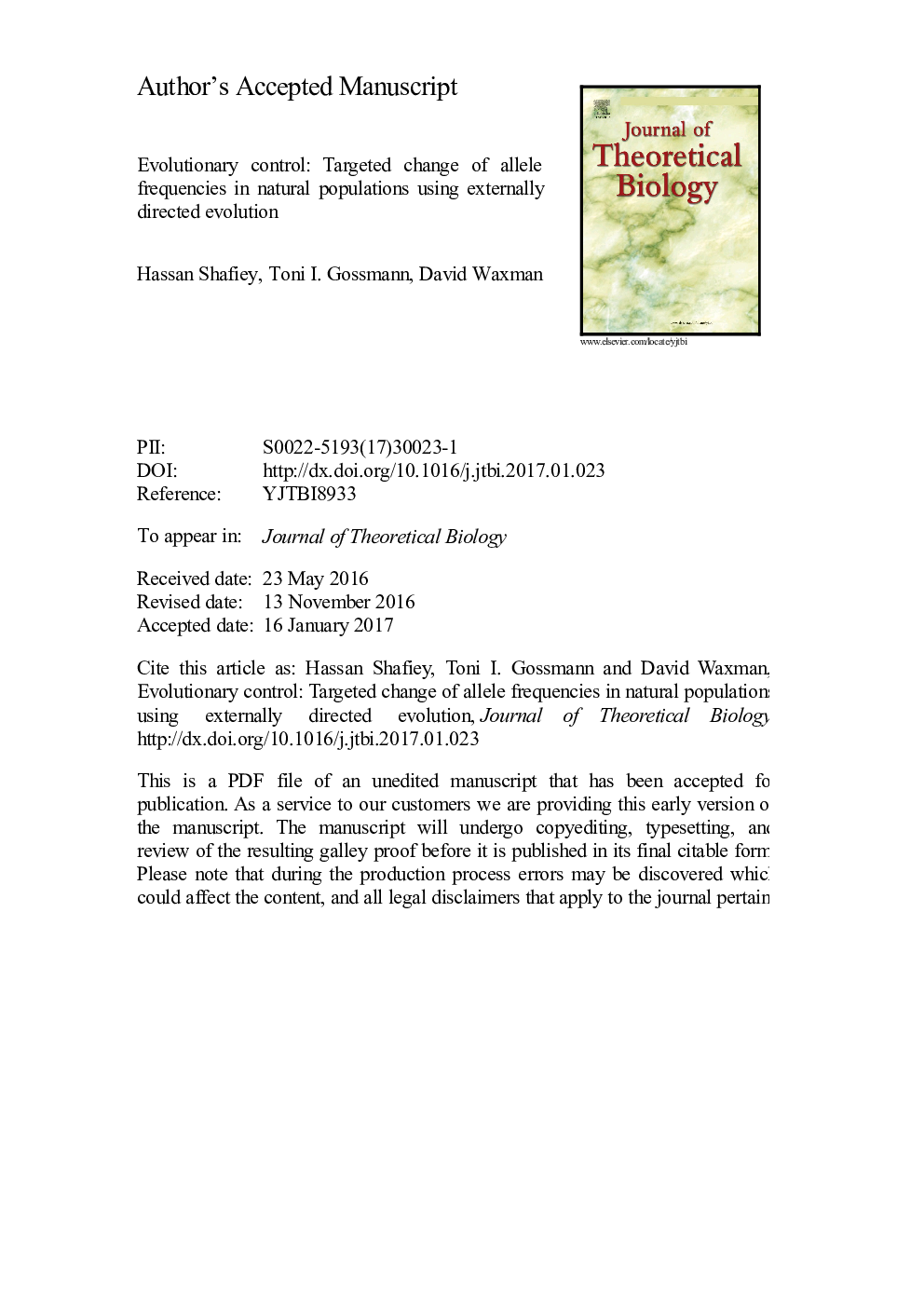| Article ID | Journal | Published Year | Pages | File Type |
|---|---|---|---|---|
| 5760151 | Journal of Theoretical Biology | 2017 | 65 Pages |
Abstract
Random processes in biology, in particular random genetic drift, often make it difficult to predict the fate of a particular mutation in a population. Using principles of theoretical population genetics, we present a form of biological control that ensures a focal allele's frequency, at a given locus, achieves a prescribed probability distribution at a given time. This control is in the form of an additional evolutionary force that acts on a population. We provide the mathematical framework that determines the additional force. Our analysis indicates that generally the additional force depends on the frequency of the focal allele, and it may also depend on the time. We argue that translating this additional force into an externally controlled process, which has the possibility of being implemented in a number of different ways corresponding to selection, migration, mutation, or a combination of these, may provide a flexible instrument for targeted change of traits of interest in natural populations. This framework may be applied, or used as an informed form of guidance, in a variety of different biological scenarios including: yield and pesticide optimisation in crop production, biofermentation, the local regulation of human-associated natural populations, such as parasitic animals, or bacterial communities in hospitals.
Related Topics
Life Sciences
Agricultural and Biological Sciences
Agricultural and Biological Sciences (General)
Authors
Hassan Shafiey, Toni I. Gossmann, David Waxman,
